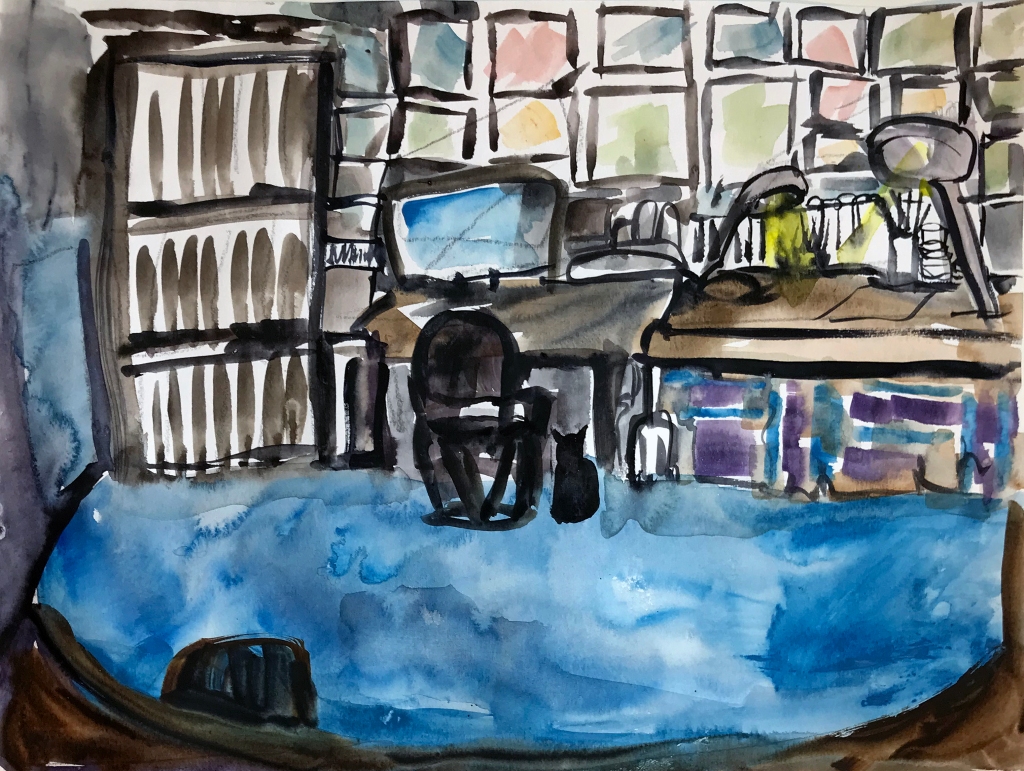
“Confined” watercolor on paper by Katie Turner. The view is from a platform above an enclosed courtyard.
After thumbing through one of my old graphic arts books, I was thinking about how artists learn to express themselves visually and learn to see, not just using the sense of sight. Matisse said that when he ate a tomato he just looked at it, “But,” he said, “When I paint a tomato, I see it differently.”
It’s true that artists see the world differently. Seeing things differently enable an artist to deliver a message through their art. Some say artists have heightened awareness. How is it that an artist can see something different from others?
Some artists learn through life drawing classes. Sometimes it can be a real struggle but life drawing classes can be a real growth opportunity for an artist. They look, analyze, translate what they see into marks on paper and along the way acquire visual skills. Learning how to “see” makes it possible to conceptualize more unique and original designs.
Some art classes don’t teach students to see but give them quick shortcuts to produce life drawings. Historically, drawing was thought unnecessary and a lot of design students graduated from art school without any drawing at all. As time continues, the pendulum swings back and forth with what is taught in school. When representational art is popular, you will see more formal drawing classes available and when it’s not, less formal will rule.
There are many exercises available to hone your drawing skills that will also grow your ability to “see” creatively.
Here are my favorites:
- Turn things upside down before sketching. By placing an object in an unusual position it forces the mind to look more closely at it. This forces us out of automatic drawing mode and trains us to draw what we see.
- Draw the negative spaces only. Concentrating on drawing these abstract shapes forces your mind away from preconceived ideas.
- Squint or use Red Acetate Film when sketching. Squinting or using this red acetate will quickly simplify any complex subject into simple shapes and values. Your mind will be less likely to focus on the detail.
If you put just a few exercises into your daily practice, you will be “seeing” and drawing better in no time. When the artist has better visual awareness, the door to creativity is opened.
***
Tags: art, arts, creativity, drawing, encouragement, Inspiration, Matisse, process























